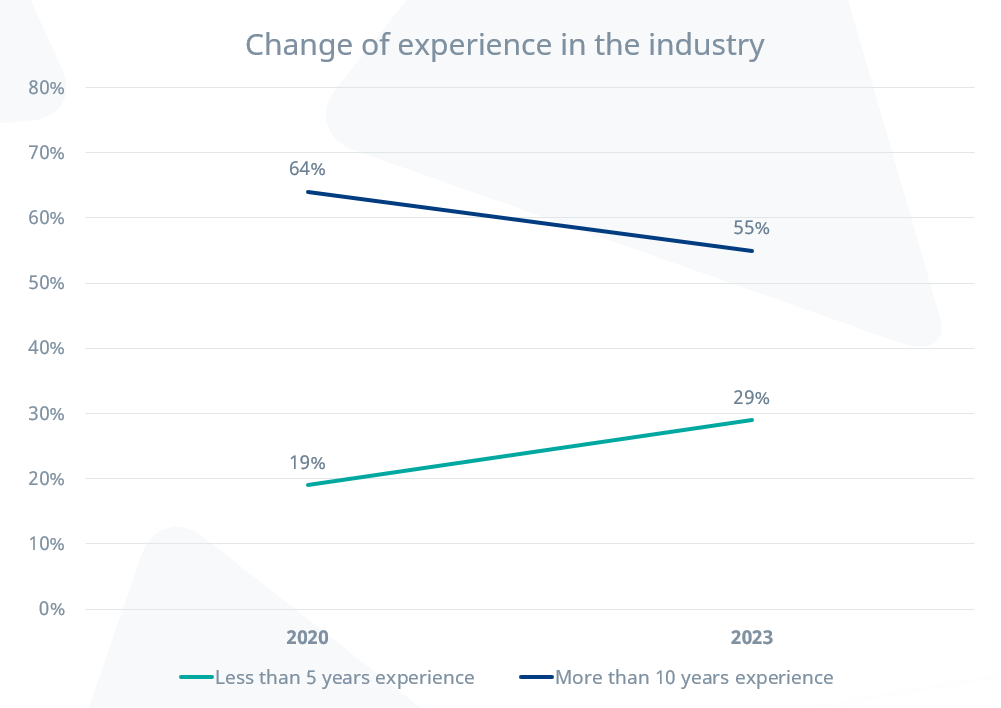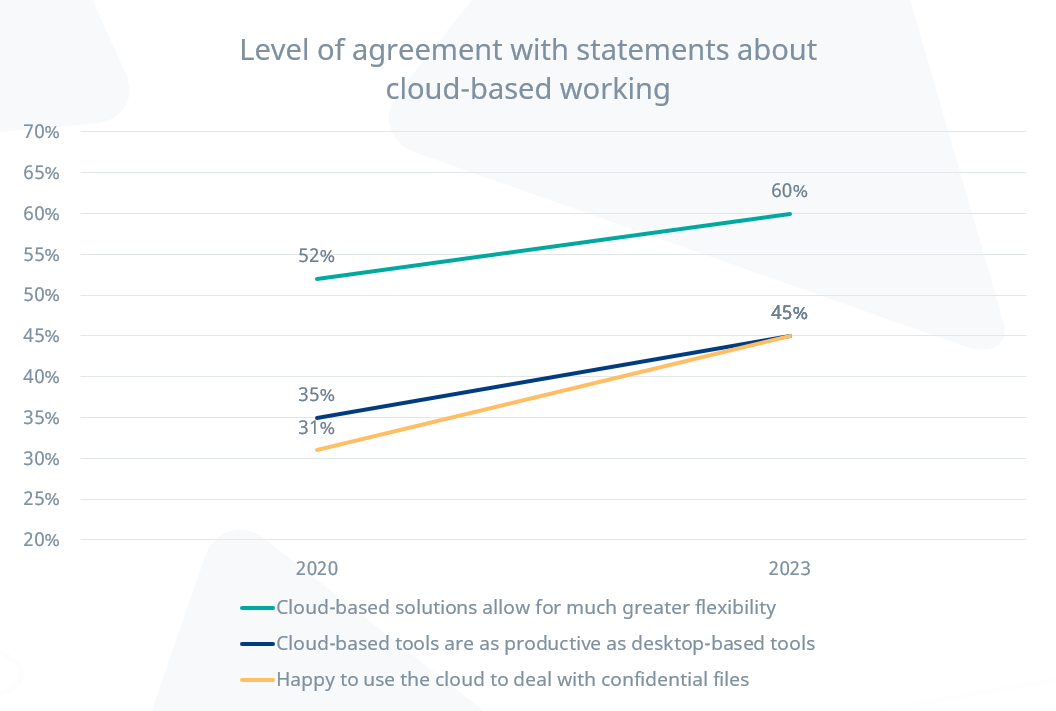In an industry under pressure, how do freelance translators thrive?
03 Mar 2023
 5 mins read
5 mins read

‘An industry under pressure’ – this is a statement we hear a lot, particularly in the localization industry. Demand for localization is increasing exponentially thanks to digitization, social media, and the undeniable truth that customers are more likely to buy products and services marketed in their own language. In fact, 89% said as much in the recent ‘RWS Unlocked 2023 Report’. It’s true, the localization industry is thriving – it grew by 11.75% in 2021 and is predicted to grow another 7.5% over the next 5 years – but can it sustain this level of demand?
Trados recently conducted a worldwide survey analyzing the state of the localization industry, the results from which have now been published in our Translation Technology Insights 2023 report. We wanted to better understand the pressures you are facing and offer insight into what can be done to alleviate it.
We received a fantastic response – over 1,400 freelance translators participated from over 100 countries. Here I’ll uncover some of our key findings for freelance translators, reveal where you’re most under pressure and show you what Trados can do to help.
Work smarter not harder
Firstly, let’s talk about the looming skills shortage we’re facing – it’s no secret that the localization industry is finding it hard to find qualified linguists. Whether people are leaving the job down to poor working conditions, low pay or simply that the generation that created the localization industry in the 1980s is starting to retire, there’s no clear answer. We saw this trend emerge through our 2023 findings too. When comparing results with 2020, we can see that:
In 2020, 64% had more than 10 years of experience; 19% less than 5 years.
In 2023, 55% have more than 10 years of experience; 29% less than 5 years.

As you can see, experience has shifted to the lower end of the scale. As demand is increasing and the pool of available translators is shrinking, the pressures being felt in the industry are being exacerbated. It’s more important than ever we work smarter, not harder in order to meet customer expectations.
Employing the right technology can help
As expected, our findings showed that a third of freelance translators had experienced an increase in work demands over the last 12 months – most notably in the number of project files they are receiving, the size of the projects and the number of customers requesting work. Demand is intensifying across the board – which of course is a good thing for business – but translators may find it difficult to meet this demand without the right processes and technology in place. The good news is that the majority of you know this and plan to make changes to help tackle these pressures – our data shows:
- 72% acknowledge you need to improve your processes.
- 69% want to improve the way they work.
- 33% plan to invest in translation technology in the next year.
We also saw 51% of you are now using machine translation (up 8% from 2020), presumably to help speed up your translation processes, leaving you more time to concentrate on the translations that need you most. When asked what translation you might invest in next (excluding those you are already using), CAT tools (45%), terminology management (39%) and collaboration tools (29%) came out on top! It’s interesting to see collaboration tools make the top three – this is yet again another way translators are spreading the load to get the job done.
Cloud perceptions are improving
One notable trend that has been on the rise for a while is the use of cloud translation technology, the benefits of which are plenty. Cloud technology can be continuously updated, is often built on newer technology, plus can be accessed easily through a browser, no matter where you are in the world. However, as cloud technology is still relatively new, there is still some hesitation to adopt these tools. With this in mind, we were very excited to see cloud perceptions improving in our 2023 report. When comparing data to 2020 results, we can see that:
- 60% believe cloud-based solutions allow for much greater flexibility (up 8%)
- 45% think cloud-based tools are as productive as desktop-based tools (up 10%)
- 45% would be happy to use the cloud to deal with confidential files (up 14%)

Plus, less translators are concerned about cloud security (down 8%) and risks of software downtime (down 6%). While you’re far from ready to completely commit to the cloud, it’s clear that you’re starting to have more confidence in the technology – 53% of you would now prefer to use a combination of cloud-based and desktop-based technology to do your work. This is another example of how we can work smarter – leveraging the power of both environments will give you more control over your translations and will enable you to translate more efficiently than ever before.
How can Trados help?
As your partners in this industry, we wanted to know what we could do to help alleviate some of the pressures you’re feeling. We heard you loud and clear:
- 70% want us to make technology easy to use.
- 49% want greater levels of product support.
- 45% asked for more/better training.
- Only 7% want new product features.
We’re committed to helping you in these areas and have already made a start. From our results we know your favourite ways to learn are by watching videos (75%), reading articles on the internet (61%) and attending webinars (50%), however, we also know everyone has their own preference. We’ve got a wealth of resources and (hopefully) something for everyone:
- New webinar series – we’re in the process of revamping our free monthly webinars to provide you with fresh new content. 56% of translators stated they didn’t have enough time to make changes to meet the challenges they have. As a result, we’ve designed our webinars to be shorter, more demo-focused and will include a Q&A, so they’re more engaging and easier to fit into your day. If you’re a beginner, check out our Translation Productivity 101 series to learn the basics of working with Trados. For intermediate users we have created a 201 series, designed for those looking to hone their skills. All webinar recordings are available here on demand.
- RWS Community forums – discuss any issues you may have, ask questions and debate trends in our online community forums. Our communities are monitored by Trados employees, as well as your peers.
- eLearning courses available – if you’re looking for more formal training, we also offer eLearning courses. At the end of the training, you can take the certification exam to prove your knowledge.
- Trados Resource Hub – here you can access all Trados resources, whether you’re looking for product videos, articles, webinars or more.
It’s also on us as technology vendors to help attract new talent to the localization industry to reduce pressure on those already working within it. We’re going to continue to modernize our technology to make the industry more desirable (Gen Z highly value modern tools) and facilitate hybrid ways of working (68% of Gen Z prefer to work this way). We’ve made some great progress in this area:
- Trados Studio comes with cloud capabilities – now you can choose whether you want to work on the desktop or in the cloud environment, or a combination of both. You have ultimate flexibility to work in the way that suits you.
- RWS AppStore – download apps to customize your processes and personalize your translation environment. Choose which functionality you need and install them at the click of a button.
- Improve existing functionality – we’ve shifted gears. Rather than focusing solely on adding new features into Trados, we’ve decided to place more attention on enhancing what we already have, so that the tools you know and love work more efficiently. Learn what improvements we’ve made based on your feedback in Trados Studio 2022, for example, here.
So, where do you go from here?
Until the industry can recruit more talent to keep up with localization demand, these pressures won’t be going anywhere. What you can do though is find ways to work more efficiently to handle the increased workload you are receiving. The great news is you have options – you can improve your processes, adopt new technology or learn how to make the most out of your existing technology (or do all three!). Whatever you need on your localization journey, you can trust Trados to be there to help. If you have any thoughts around this, we’d love to hear from you.

